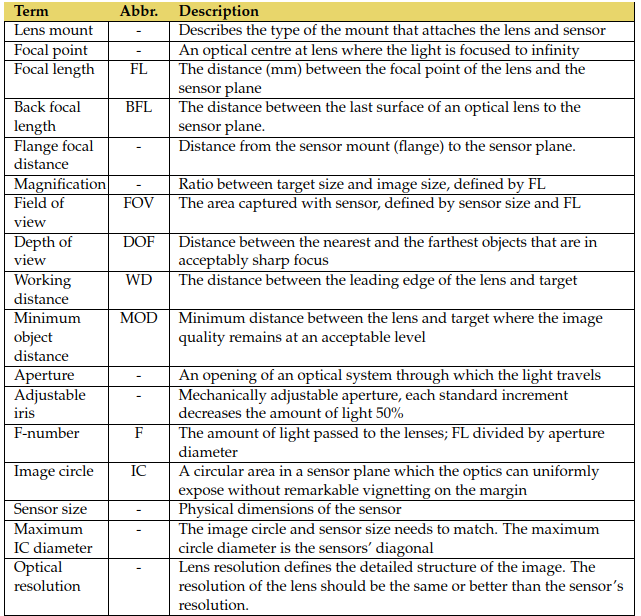The simplest example of a machine vision imager is a combination of sensor and a commercial lens. The lens selection parameters should be defined based on the target features and imaging setup.

Short definitions of the commonly used terms are introduced above in Table 1. Each lens parameter should be evaluated from the sensor and imaging setup point of view since the decisions directly affect the imaging quality and the prototype’s ability to perform its expectations.
A carefully designed system with suitable optics can reduce image-quality-related issues, decreasing the need for computational corrections (Greivenkamp 2004). While selecting the right lens, the lens features such as mount, field of view (FOV), focal length (FL), depth of view (DOF), resolution, possible polarisation and IR-cut are important (Greivenkamp (2004) and Stemmer (2022)). Within the next posts, we will deepen our optics understanding.
Found something useful? Wish to cite? This post is based on my dissertation. For citations and more information, click here to see the scientific version of it.
References
Greivenkamp, John, E. 2004. Field Guide to Geometrical Optics, Vol. FG01. SPIE, https://doi.org/10.1117/3.547461.
More info
Stemmer 2022. Stemmer Imaging, The Imaging and Vision Handbook. URL:https://www.stemmer-imaging.com/en/the-imaging-vision-handbook/ (A leading international machine vision technology provider. Accessed on 7.4.2022).
